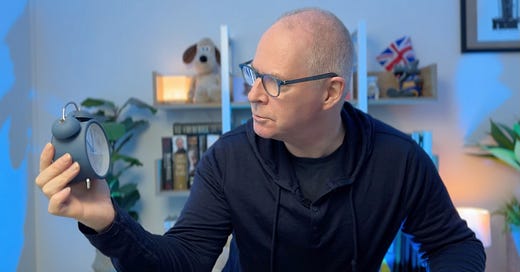Why Charles Schwab Paid $250,000 for This Simple Productivity Tip
Know what needs to be done before it needs to be done.
The advantage of getting older is the wisdom you pick up. You learn to stretch the perceived wisdom of others, deconstruct it, and play with it to see if there are better ways of doing the work.
Some of this advice is time-tested. For example, use a calendar to keep track of your appointments, collect all your tasks in a central place, and take notes. The tools you can use to do these may change, but the principles don’t.
These age-old lessons have taught me that to have a focused, productive day, I must know what needs to be done before the day starts. Not knowing causes me to spend hours in email looking for work or doom-scrolling through social media to fill the time and feel I am doing something.
If you want to significantly improve your productivity, know what needs to be done before it needs to be done.
In other words, before you end the day, you do a mini-planning session—the Daily Planning Sequence. All you require is five to ten minutes to look at your calendar for tomorrow and your to-do list to see what tasks need to be done.
Once you know that, you pick two tasks as your “must-do” or objective tasks for the day. You will do whatever it takes to complete these tasks before the day ends.
The advantage of doing this daily is you become more focused on what is important to you. Some of these tasks will be work-related, and others will be personal. For example, today, a Monday, I began the day knowing that this blog post had to be written. I also know that this afternoon I will go to the gym. These two tasks are non-negotiable. They will be done.
Looking at your calendar and task list before you end the day and deciding what your must-do tasks for the next day focuses you and gives you the clarity needed to ensure the important things are being done every day. When this becomes a habit, you gain greater control over your day and saying “no” to things that are not important becomes a lot easier.
One of the reasons Charles C Schwab paid Ivy Lee the equivalent of $250,000 for his simple productivity tip (writing out the six most important tasks to complete the next day before you leave the office) was because it works. It worked 100 years ago, and it still works today. It’s simple, and it takes less than ten minutes to do.
To reinforce this practice, when you begin the day, look at your task list and calendar and decide when you will do your must-do tasks. For instance, this morning, I had a coaching call at 7:00 am, and once my call finished, I took a ten-minute break and began writing this post. I made that decision at 6:30 am while I was writing my journal.
I know I will go to the gym at 2:30 pm (I put it on my calendar) and will not allow anything to get in the way. I feel focused, prepared and confident that the day will be productive.
Planning the next day before you end the day and reviewing your decision in the morning is similar to how pilots do their work. A pilot does not just roll out of bed, enter the cockpit, and turn on the engines. Instead, before arriving at the aircraft, they plan their journey. They know their destination, check the weather for adverse conditions, and plot their journey to avoid these dangers.
Similarly, surgeons performing operations today will know what operations they will be performing before they start their day, at what time and the details of their patients. A surgeon would never arrive at the operating room unprepared. Not only would that be unprofessional, but it would also be perilous.
If you want to be more productive and more in control of your time, you need to plan your day. And this does not just mean planning your work day. It also means planning your non-work days—even if that is simply planning to have a rest.
If I have had an intense work period for a week or two. I will schedule a day of rest. I still plan the day. For instance, I will decide the evening before that I will not start the day in my studio tomorrow. I may start the day by waking up naturally (with no alarm) and then taking my dog for a walk. It’s an easy planning session, but it’s still planned. If I didn’t do that, I would likely begin the day by checking email, and that could lead me to do work. That is what I want to do on a rest day.
It’s the daily planning that puts you in control of your days. It mentally prepares you for whatever tasks you decide to do and gives you greater clarity and focus. The important things get done, and you are less stressed and overwhelmed. Try it for a week. You will be surprised by the results you see.
You can learn more about the Daily Planning Sequence in this video
If you'd like more time management tips (like this one) in your inbox, please do join my newsletter
Get a copy of my latest book, Your Time Your Way: Time well managed, life well lived.




